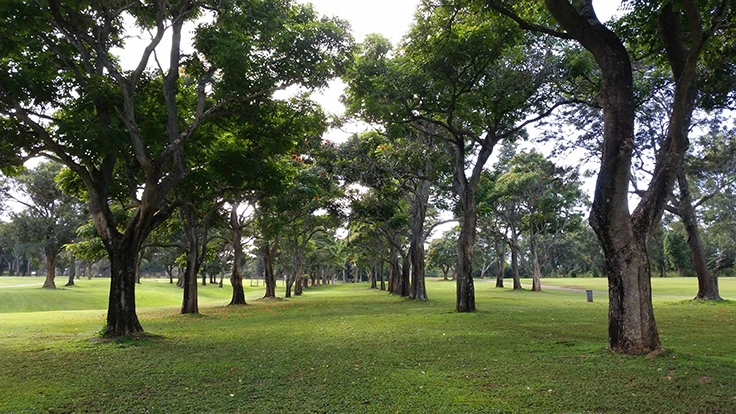
Trees are an important part of the infrastructure at many golf facilities. They frame holes and dictate the line of play while providing golfers with much-desired shade.
It’s no secret that trees can become problematic on a golf course, but they are undoubtedly an asset when properly maintained.
As golf courses, and other facilities for that matter, look to plant new trees, however, they must look ahead to when those trees mature, a half-century or more from now.
Dr. Jason Grabosky of Rutgers University says it’s important to look into the future and have an understanding of what the climate will be like in the final third of the 21st century.
“Fortunately, the (United States Department of Agriculture) has very good systems in place so we can at least have a decent scenario base for what the environment will look like in the future,” Grabosky says. “And if trees take decades to get to the size where they function on a golf course or in any environment, what we have to think about is, once the tree (achieves) its designed size, what is the environment looking like? Because if we plant a tree now that falls off its environmental niche with climate change, it’s going to cost a lot more money in terms of management of that tree for diseases and pests and as far as premature death.”
Grabosky, a professor of urban forestry, says superintendents and the people they report to must look to the future. “We can plant things now that are moving into that environment,” he says, “and we’ll lower our costs as far as management and lower the disease and pest presence because most diseases and pests are secondary stress disorders, and if the tree is not matched to its site, it’s under stress.”
Grabosky adds turf experts are already anticipating what the climate will be like in New Jersey in 2070 and planning accordingly.
“We can look very quickly at similar soils in the outwash plain and the Piedmont soils in South Carolina,” he says. “We can see that that environment is going to be very close to what we project New Jersey to be so we can take our cues from some of the coastal South Carolina situations. When we get further inland and upland, say in northwestern New Jersey, then we’re really looking at the western side of (the Appalachians) south of Virginia down toward Tennessee. Those would be where we would get our cues. Then we look at the developed environment and then impose other filters, such as high pH of the soil due to concrete.”
The issue of climate change has become politically charged to say the least. But those who have made the turf industry their profession understand what nature is telling them. It is their task to find ways of dealing with the realities of the situation.
“There is no controversy that our climate is changing,” Grabosky says. “And there should not be any argument about why, however that becomes politicized, rather than dealing with the facts on the ground. Superintendents have to deal with the facts on the ground.”
Rick Woelfel is a Philadelphia-based writer and frequent GCI contributor.